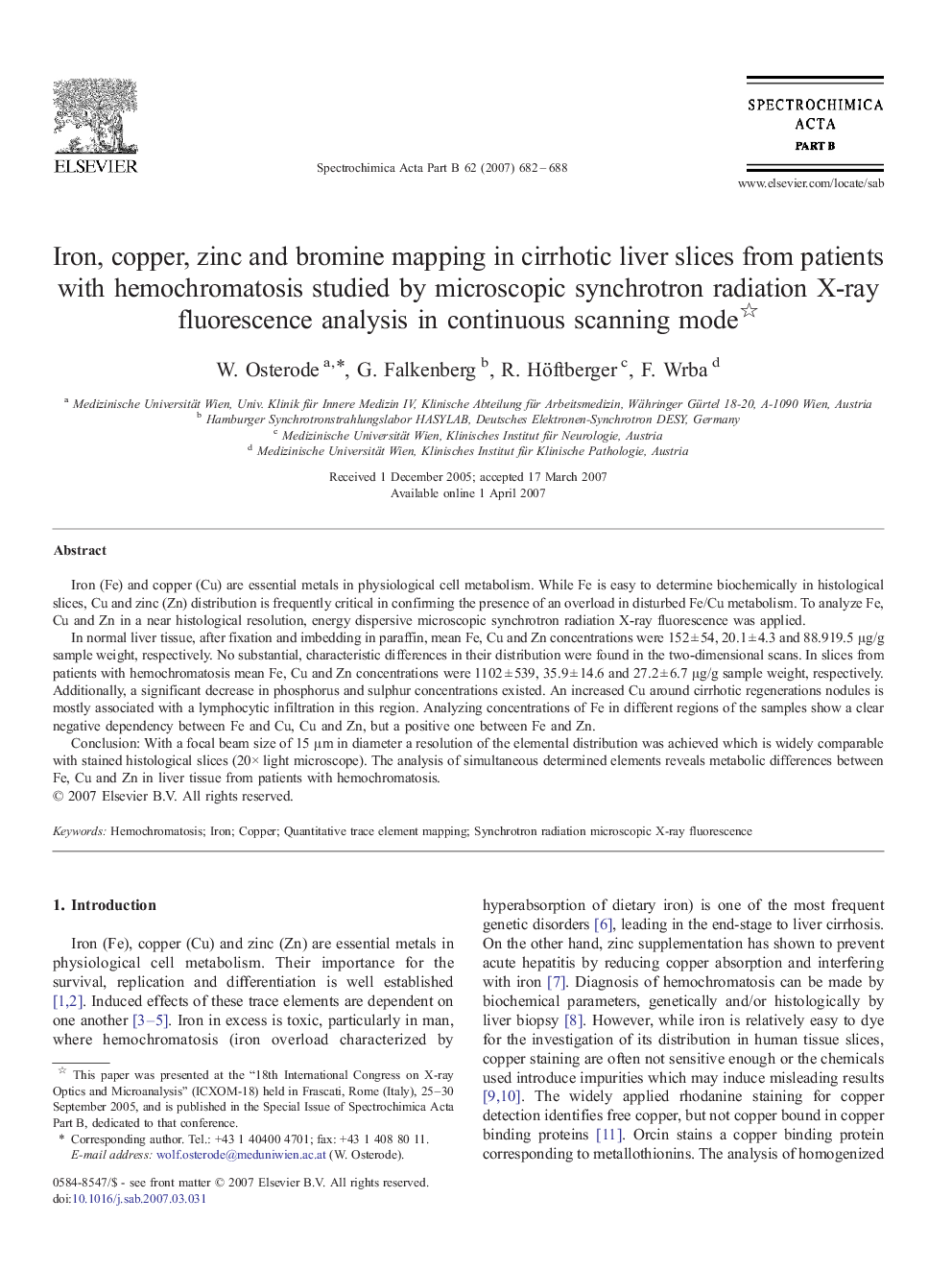| Article ID | Journal | Published Year | Pages | File Type |
|---|---|---|---|---|
| 1241404 | Spectrochimica Acta Part B: Atomic Spectroscopy | 2007 | 7 Pages |
Iron (Fe) and copper (Cu) are essential metals in physiological cell metabolism. While Fe is easy to determine biochemically in histological slices, Cu and zinc (Zn) distribution is frequently critical in confirming the presence of an overload in disturbed Fe/Cu metabolism. To analyze Fe, Cu and Zn in a near histological resolution, energy dispersive microscopic synchrotron radiation X-ray fluorescence was applied.In normal liver tissue, after fixation and imbedding in paraffin, mean Fe, Cu and Zn concentrations were 152 ± 54, 20.1 ± 4.3 and 88.919.5 μg/g sample weight, respectively. No substantial, characteristic differences in their distribution were found in the two-dimensional scans. In slices from patients with hemochromatosis mean Fe, Cu and Zn concentrations were 1102 ± 539, 35.9 ± 14.6 and 27.2 ± 6.7 μg/g sample weight, respectively. Additionally, a significant decrease in phosphorus and sulphur concentrations existed. An increased Cu around cirrhotic regenerations nodules is mostly associated with a lymphocytic infiltration in this region. Analyzing concentrations of Fe in different regions of the samples show a clear negative dependency between Fe and Cu, Cu and Zn, but a positive one between Fe and Zn.Conclusion: With a focal beam size of 15 μm in diameter a resolution of the elemental distribution was achieved which is widely comparable with stained histological slices (20× light microscope). The analysis of simultaneous determined elements reveals metabolic differences between Fe, Cu and Zn in liver tissue from patients with hemochromatosis.
